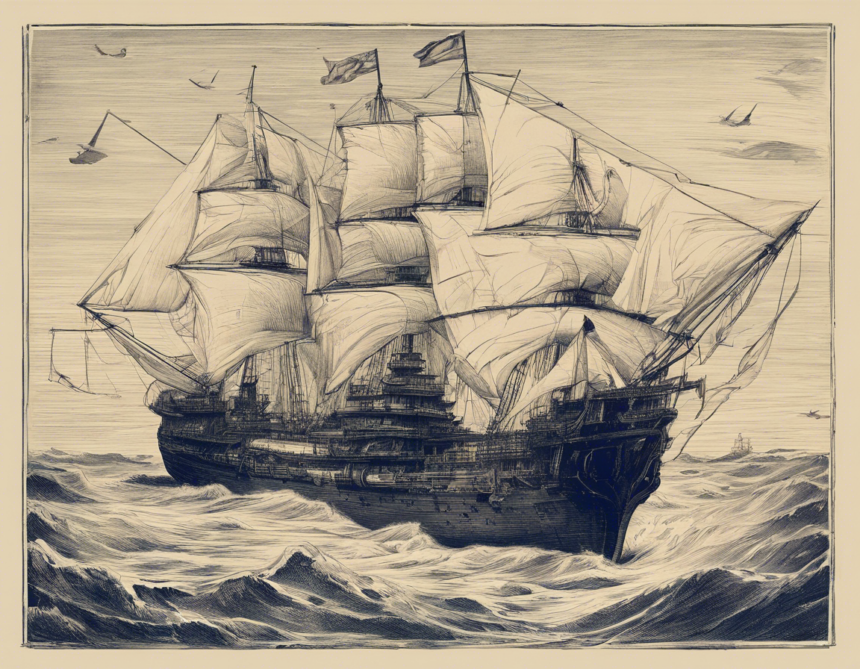Naval writing, also known as naval correspondence or naval messaging, plays a crucial role in the communication within the Navy. It serves as a formal documented communication tool that ensures clear, concise, and accurate information exchange among naval personnel. Mastering the art of naval writing is important for efficient communication, accurate record-keeping, and maintaining professionalism within the naval forces. In this comprehensive guide, we will explore various tips and techniques to help you enhance your naval writing skills.
The Importance of Naval Writing:
Naval writing is a vital aspect of communication within the Navy for several reasons:
-
Clarity and Precision: Effective naval writing ensures that messages are clear, concise, and to the point. This is crucial in situations where quick and accurate communication is essential.
-
Legal and Official Documentation: Naval writing often involves official documentation that may have legal implications. Ensuring accuracy and precision in writing is critical to avoid misunderstandings or misinterpretations.
-
Chain of Command: Clear and structured naval writing helps in maintaining the chain of command within the Navy, ensuring that messages are delivered to the right personnel in a timely manner.
-
Operational Efficiency: Well-written naval messages help in coordinating operations, conveying orders, and disseminating essential information efficiently.
-
Professionalism: Good naval writing reflects professionalism and attention to detail, which are essential qualities in military settings.
Tips for Enhancing Your Naval Writing Skills:
1. Understand Naval Terminology:
To effectively communicate within the naval context, it is important to have a good grasp of naval terminology. Use the correct terminology in your writing to ensure clarity and precision.
2. Follow Naval Correspondence Formats:
Naval correspondence often follows specific formats and templates. Familiarize yourself with these formats, including message headers, subject lines, and proper salutations.
3. Be Concise and Direct:
Avoid unnecessary details or verbose language. Get straight to the point and convey your message in a clear and concise manner.
4. Use Active Voice:
Active voice conveys a sense of directness and immediacy. Instead of writing, “The report was submitted by the team,” use, “The team submitted the report.”
5. Proofread Thoroughly:
Check your writing for spelling and grammatical errors. Ensure that all information is accurate before sending out any naval correspondence.
6. Maintain Confidentiality:
Respect the sensitivity of certain information and maintain confidentiality as required by naval protocols.
7. Use Standard Phrases and Templates:
Utilize standard phrases and templates for common messages to streamline the writing process and maintain consistency.
Techniques for Effective Naval Writing:
1. Structured Messaging:
Organize your messages in a clear and structured manner. Use headings, bullet points, or numbered lists to break down complex information.
2. Subject Line Clarity:
Ensure that the subject line of your message accurately reflects the content. This helps recipients prioritize and categorize messages efficiently.
3. Action-Oriented Language:
Use action verbs to convey tasks or instructions clearly. For example, instead of saying, “Consider the options,” say, “Please review the options and provide feedback by Friday.”
4. Tone and Professionalism**:
Maintain a respectful and professional tone in your writing. Avoid sarcasm, informal language, or personal opinions in official naval correspondence.
5. Acknowledge Reception:
When sending important information, request acknowledgment of receipt to ensure that the message has been received and understood.
6. Use of Acronyms:
While acronyms can help in brevity, avoid using excessive or unfamiliar acronyms that may confuse recipients. Spell out acronyms the first time you use them in a message.
7. Review and Revise**:
Before sending out any naval correspondence, review your message for accuracy, completeness, and coherence. Revise as needed to ensure it meets the intended purpose.
Frequently Asked Questions (FAQs):
1. What is the difference between naval writing and regular business correspondence?
Naval writing follows specific formats and protocols unique to the naval context, including standardized phrases, acronyms, and terminology geared towards military operations.
2. How important is proofreading in naval writing?
Proofreading is crucial in naval writing to ensure accuracy, clarity, and professionalism. Errors in naval correspondence can lead to misunderstandings or confusion among personnel.
3. Can informal language be used in naval writing?
Naval writing requires a formal and professional tone. Informal language, slang, or personal opinions should be avoided to maintain professionalism and respect within the military environment.
4. Is it necessary to use acronyms in naval writing?
Acronyms can be used in naval writing to improve brevity and efficiency. However, it is essential to use acronyms that are widely understood within the naval context and to spell them out the first time they are used in a message.
5. How can I improve my naval writing skills?
Improving naval writing skills requires practice, attention to detail, and familiarity with naval terminology and protocols. Seeking feedback from experienced personnel and studying naval writing examples can also be beneficial.
In conclusion, mastering the art of naval writing is essential for effective communication, operational efficiency, and professionalism within the Navy. By following the tips, techniques, and best practices outlined in this guide, you can enhance your naval writing skills and contribute to clear, concise, and accurate communication within the naval forces.


Leave a Reply